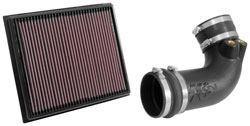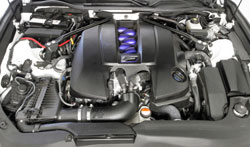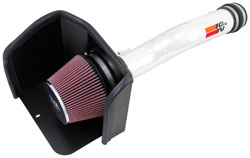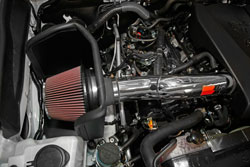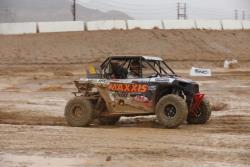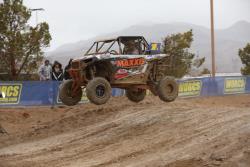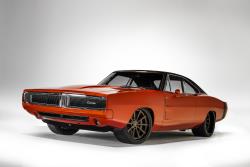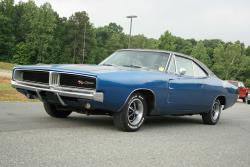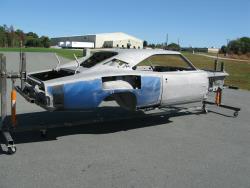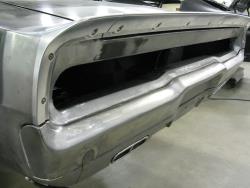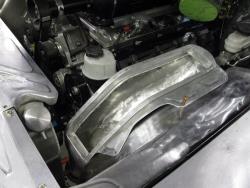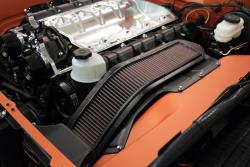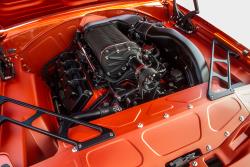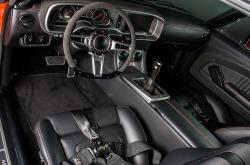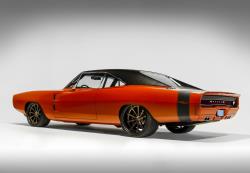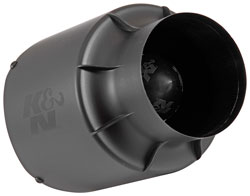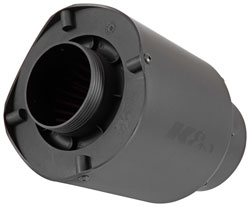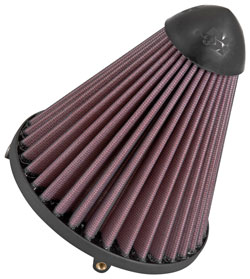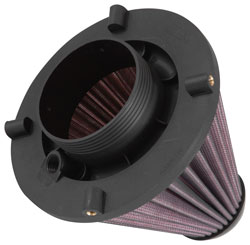K&N Air Intake for 2015-2017 Lexus RC F Offers Estimated Boost of 13.5 Horsepower
- 13 feb 2017
All vehicles marketed internationally as Lexus from 1989 through 2005 were released under the Toyota marque in Japan. It wasn’t until 2005 that Lexus was introduced into the Japanese car market. Introduced in 2014, the Lexus RC F is a high performance vehicle that features a 5.0-liter 2UR-GSE V8 engine and an 8-speed automatic transmission that sends power to the rear wheels. It includes a vertical G-sensor for Vehicle Dynamics Integrated Management, an integrated handling and software control system developed by Toyota. It also has Torque Vectoring Differential (TVD) with three modes – standard, slalom, or track. There are also front and rear coil-spring independent suspension, monotube gas-filled shock absorbers and ball joined stabilizer bars, 19-inch diameter forged aluminum wheels, spindle grille with F-mesh pattern on the lower half, unique hood with air vents, front cooling ducts, L-shaped front fender ducts and combination meters with centrally-mounted tachometer that changes according to drive mode, digital and analog speedometer, G-force meter, oil and water temperature gauges, and mileage information. The 2015, 2016 and 2017 RC F is a two-door version of the Lexus four-door sport sedan. The car borrows from previous and current Lexus models. The front section is from the wide-body GS, the middle section from the previous generation IS convertible and the rear third is taken from the current-generation IS. The original 5.0-liter V8 has been modified with only the aluminum block retained. The heads, cams, titanium valves, forged connecting rods, crank journals, intake manifold, and larger throttle body are all new. As a result, the new engine generates 467-horsepower compared to 420-horsepower produced by the previous engine. Torque has also been enhanced now achieving 389 lb-ft compared to 371 lb-ft. The engine is classified not to be a gas-guzzler, which avoids a gas-guzzler tax in Japan and converts from Otto cycle to Atkinson cycle under light loads. The set up is considered better than cylinder deactivation because after 100,000 or so miles activated cylinders have greater wear and tear than deactivated ones.
The air intake features a K&N replacement air filter that is washable and reusable and can be used for up to 50,000 miles before cleaning is required. The air filter is constructed of a multilayered cotton gauze media that is treated with a special grade of oil that makes the strands of the cotton sticky. K&N also offers an air filter cleaning kit that is specially formulated to clean and recharge the filter after up to 50,000 miles of driving, depending on driving conditions, so that it can be used over and over again. In fact, the K&N air filter will last for the life of the car. K&N backs the air filter with a 10-year/Million Mile Limited Warranty. This guarantees that it will perform for up to 10 years or 1,000,000 miles without requiring replacement. The K&N 63-9038 air intake system is designed to fit the following vehicles: 2017 LEXUS RC F 5.0L V8 Fuel Injection - All Models | |||
| | |||
| |||
| | |||

